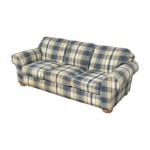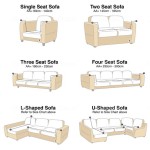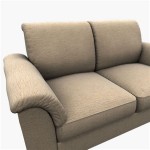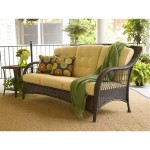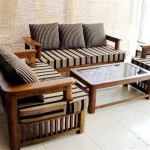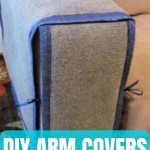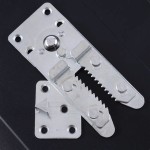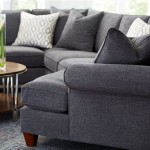Which Fabric Is Best For Your Sofa Set? A Comprehensive Guide
Choosing the right fabric for a sofa set is a crucial decision, impacting both the aesthetic appeal and the long-term durability of the furniture. The ideal fabric should not only complement the room's decor but also withstand daily wear and tear, resist stains, and be easy to maintain. With a vast array of options available, navigating the world of sofa fabrics can be overwhelming. This article provides a detailed guide to understanding the various fabric types, their properties, and their suitability for different lifestyles and needs.
The lifespan of a sofa is directly related to the quality and properties of the fabric used in its upholstery. A poorly chosen fabric can fade, tear, or stain easily, leading to premature replacement. Conversely, a durable and well-maintained fabric can extend the life of a sofa, making it a worthwhile investment. Factors such as household composition, usage patterns, and personal preferences all play a significant role in determining the best fabric choice.
Before delving into specific fabric types, it's important to consider several key factors that influence fabric performance. These include durability, stain resistance, ease of cleaning, texture, color, and cost. Balancing these factors is essential for selecting a fabric that meets both practical and aesthetic requirements.
Durability: The Foundation of Sofa Fabric Selection
Durability refers to a fabric's ability to withstand wear and tear over time. This is particularly important for sofas that are used frequently. Fabrics with higher durability ratings are less likely to pill, tear, or fade, making them a better choice for high-traffic areas and households with children or pets.
The durability of a fabric is often measured using the "double rub" test, which simulates the abrasion a fabric undergoes during regular use. A higher double rub count indicates greater durability. For residential use, a fabric with a double rub count of 15,000 or higher is generally considered suitable. For commercial settings, a count of 30,000 or more is recommended.
Natural fibers like linen and cotton, while aesthetically pleasing, are generally less durable than synthetic fibers such as polyester and microfiber. However, certain weaves and treatments can enhance the durability of natural fabrics. For example, a tightly woven cotton canvas is more durable than a loosely woven linen.
The backing of the fabric also contributes to its durability. A strong and well-constructed backing provides additional support and prevents the fabric from stretching or sagging. Therefore, when evaluating fabric samples, it is important to examine both the face and the backing.
Stain Resistance and Cleanability: Essential for Practicality
Stain resistance and cleanability are crucial considerations, especially for sofas used in households with children, pets, or frequent entertaining. Fabrics that are inherently stain-resistant or treated with stain-repellent finishes can significantly reduce the risk of permanent damage from spills and accidents.
Microfiber, also known as faux suede, is renowned for its stain resistance. Its tightly woven fibers prevent liquids from penetrating quickly, allowing ample time for cleanup. Polyester is another good option, as it is naturally resistant to water-based stains. For natural fabrics, consider those treated with stain-resistant coatings.
The ease of cleaning is another important factor. Some fabrics can be spot-cleaned with mild soap and water, while others require professional cleaning. Checking the fabric's cleaning code (usually found on the manufacturer's label) is essential. Codes typically indicate whether the fabric should be cleaned with water-based solutions (W), solvent-based solutions (S), or a combination of both (WS). An "X" indicates that professional cleaning is the only recommended method.
Consider the color of the fabric as well. Darker colors and patterned fabrics tend to hide stains more effectively than lighter, solid colors. However, dark colors may also be more prone to fading in direct sunlight.
Exploring Common Sofa Fabric Types: Properties and Applications
Several fabric types are commonly used for sofa upholstery, each with its own unique properties and advantages. Understanding these differences will help in making an informed decision.
Cotton: A natural fiber known for its breathability and comfort. Cotton is relatively inexpensive and comes in a wide variety of colors and patterns. However, it is not particularly durable or stain-resistant and may require frequent cleaning or treatment with stain-repellent finishes. Cotton is best suited for formal living rooms or areas with low traffic.
Linen: Another natural fiber prized for its elegant appearance and cool feel. Linen is more durable than cotton but is also prone to wrinkling and staining. It is often blended with other fibers, such as cotton or polyester, to improve its durability and wrinkle resistance. Linen is a good choice for those who appreciate a sophisticated look and are willing to invest in proper care.
Polyester: A synthetic fiber known for its durability, stain resistance, and affordability. Polyester is less prone to fading and wrinkling than natural fibers and is relatively easy to clean. It is a versatile option that can be used in a variety of settings. However, polyester is not as breathable as natural fibers and may feel less comfortable in hot weather.
Microfiber (Faux Suede): A synthetic fabric made from tightly woven polyester fibers. Microfiber is incredibly soft, durable, and stain-resistant. It is also relatively easy to clean and maintain. Microfiber is an excellent choice for households with children, pets, or frequent spills. It offers a luxurious feel at a more affordable price point than real suede.
Velvet: A luxurious fabric characterized by its soft, plush pile. Velvet can be made from various fibers, including cotton, silk, and polyester. While velvet adds a touch of elegance to any room, it is not particularly durable or stain-resistant. Velvet requires careful maintenance and is best suited for formal living rooms or areas with low traffic. Polyester velvet is generally more durable and stain-resistant than cotton or silk velvet.
Leather: A natural material prized for its durability, luxurious feel, and unique character. Leather sofas are typically more expensive than fabric sofas but can last for many years with proper care. Leather is relatively stain-resistant and easy to clean, but it can be susceptible to scratches and fading. Different types of leather, such as top-grain, full-grain, and bonded leather, offer varying levels of quality and durability.
Olefin: A synthetic fiber known for its exceptional durability, stain resistance, and resistance to fading from sunlight. Olefin is often used in outdoor furniture due to its ability to withstand the elements. It is also a good choice for high-traffic areas and households with pets. Olefin is relatively inexpensive and easy to clean.
Acrylic: Another synthetic fiber often used as an alternative to wool. Acrylic is soft, durable, and resistant to fading and mildew. It is relatively easy to clean and maintain, making it a good choice for families with children or pets. However, acrylic is not as breathable as natural fibers and may pill over time.
Blended Fabrics: Many sofa fabrics are blends of different fibers, combining the best properties of each. For example, a cotton-polyester blend offers the comfort of cotton with the durability and stain resistance of polyester. Blended fabrics can provide a good balance of aesthetics, performance, and cost.
Beyond choosing the basic fiber, the weave of the fabric can have a significant impact on its performance. Tightly woven fabrics are generally more durable and stain-resistant than loosely woven fabrics. Common weaves include plain weave, twill weave, and jacquard weave. A plain weave is simple and durable, while a twill weave has a diagonal pattern and is more resistant to wrinkles. A jacquard weave is more complex and allows for intricate patterns.
In summary, the best fabric for a sofa set depends on a variety of factors, including lifestyle, budget, and aesthetic preferences. By carefully considering the properties of different fabric types and the specific needs of the household, an informed decision can be made that will result in a sofa that is both beautiful and functional for years to come.

Best Fabrics For Sofas The Inside

What Are The Top 10 Fabrics For Sofas Picket Rail Custom Furniture
The Best Sofa Fabric For You Moko Home Living

The 7 Best Sofas Of 2025 Reviews By Wirecutter

The 7 Best Sofas Of 2025 Reviews By Wirecutter

Sofa Set Diffe Types Size Look Benefits Cost

Best Sofa Sets For Living Room In 2024 Explore Our Top 9 Picks And Choose The Most Comfortable Hindustan Times
A Beautiful High Quality Living Room Furniture Rooms Best Sofa Set Fabric

Enjoy The Comfort And Luxury Of Top 6 Picks Beautiful Sofa Sets For Your Home Hindustan Times

Buy Premium Fabric Sofas Upto 70 Off On Various Sofa Set Royaloak

